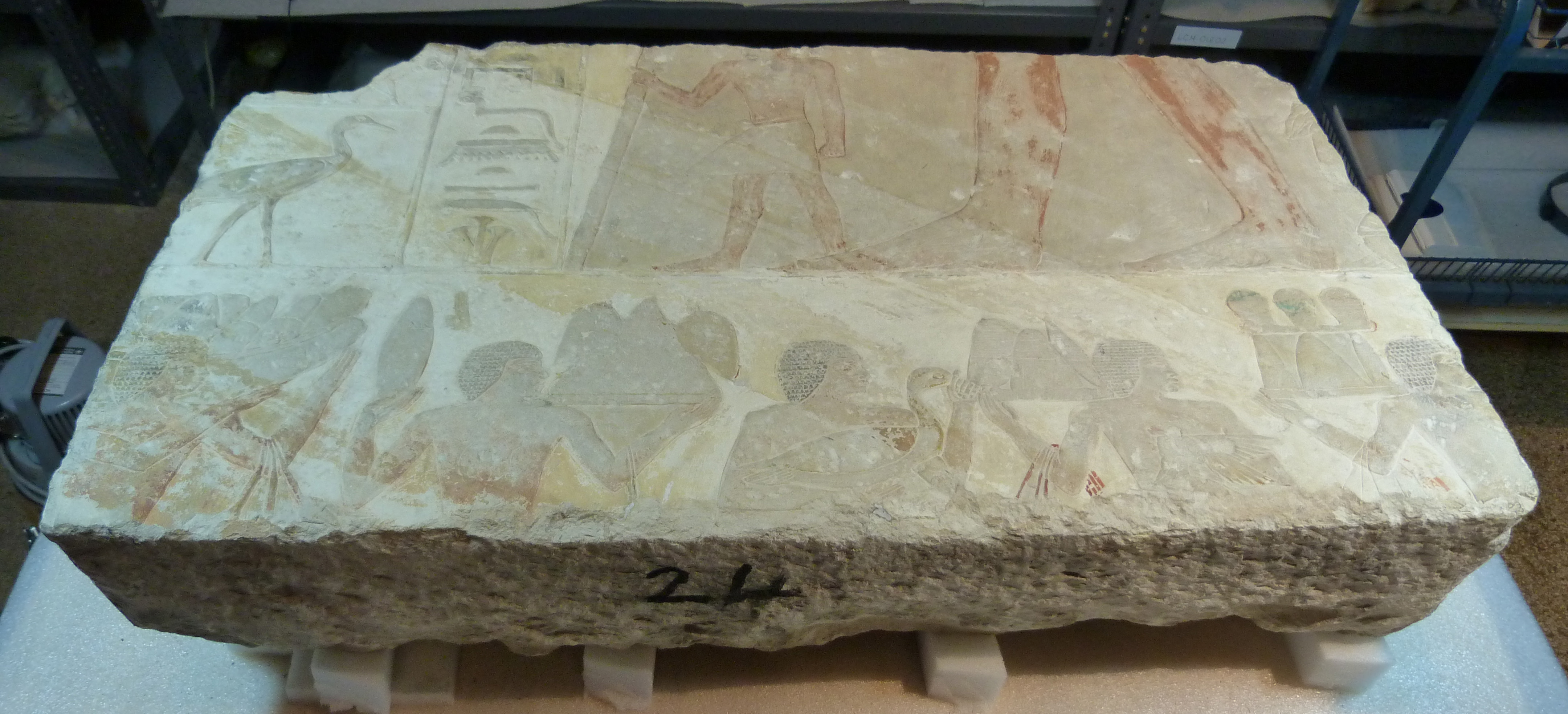By Jessica Byler
The condition survey of our papyri collection is complete – I counted almost 4,300 fragments of papyrus and vellum, more than we realized were there! The papyrus ranged in size from a few millimeters to 9 feet long. Now, I have moved on to treating a few of the papyri that will be on display in the new Egyptian galleries.
Many of the papyri are sandwiched between pieces of Mylar. Static from Mylar can lift off friable ink or even split the two layers of the papyrus fibers and damage the papyrus. In order to safely remove the papyrus, I use a MinION 2 Ionizing Blower to eliminate the static charge. After removing the papyrus from the Mylar, I can then remove old repairs, realign fragments and fibers that are out of place, and apply new tissue paper bridges. Using a light box can help me identify joins and keep fragments in alignment. Papyrus fibers have different thicknesses, widths, and orientations, so transmitted light from a light box reveals the unique fiber pattern.

Right: Using a light box to realign fragments
Let’s look at one papyrus I am currently treating: a Temple robbery papyrus (49-11-1), dated to the 20th Dynasty or 11th century BCE. Along with removing old materials that might harm or obscure the papyrus, a key reason I am treating this particular document is to make sure the joins are right. It is fragmentary and there have been several treatment campaigns to repair it using a variety of materials, including Scotch tape, Japanese tissue, and Document Repair Tape.

I removed the old repairs where possible and reassessed the location of the fragments. At some point, several of the fragments have become misaligned or detached. In several instances, the fragments were just slightly out of line and could easily be nudged back into place. However, I quickly noticed some issues with a long fragment on the far left (on the right in the photo of the back below), and a small rectangular fragment at the bottom.

Right: Section under transmitted light from a light box, with red arrows pointing to the two fragments in the wrong spot
On the long fragment, there are ink marks either side of the join which do not meet up. If the fragment was in the correct location, you would expect the writing to extend over the break. On the smaller fragment, the color, curvature, and thickness were different than the surrounding fragments. Using transmitted light, it is clear the fibers of these fragments do not actually line up correctly. Although at first glance they might not look out of place, they clearly do not belong there.

Right: Detail under transmitted light, with red arrows showing that the fibers do not line up
The long fragment has two lines of writing at the top, so the number of locations it could join was limited. The small fragment at the bottom did not have any writing on it, so it was harder to determine its orientation and position. To add to this complicated puzzle, these pieces also might not join to any of the extant fragments.

Right: Detail of back during treatment, with red arrows pointing the two fragments, and blue arrows pointing to some of the new bridges; areas of white residue from the old materials is also visible
Thankfully, their proper locations were easy to find using a light box. As you can see in the detail photos above, the fibers of the papyrus were a perfect match. The tissue paper bridges I used were around the size of a grain of rice and are clearly visible but blend in nicely with the papyrus. The Temple robbery papyrus is now ready for display!

This project is funded by the Antiquities Endowment Fund (AEF). The AEF is supported by an endowment established with funds from the United Stated Agency for International Development (USAID).


















